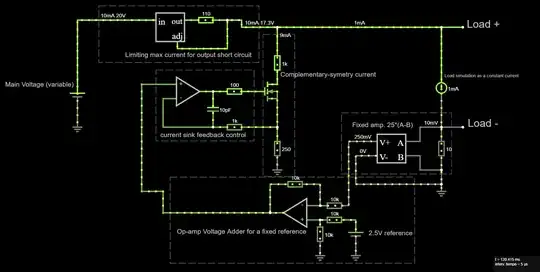I just made this circuit that I can't even properly name as it has unique features. My question is if there is an easy way to do this.
Required features:
- Constant current sink 10mA
- Variable power supply (20-40V). Current must be constant from any input range.
- Variable output current. If the device in the output sinks 1mA, the input power supply must still source 10mA. I call it a complementary current sink circuit.
The circuit that I simulated works but I think there's a better way.
Simulation circuit: LINK
